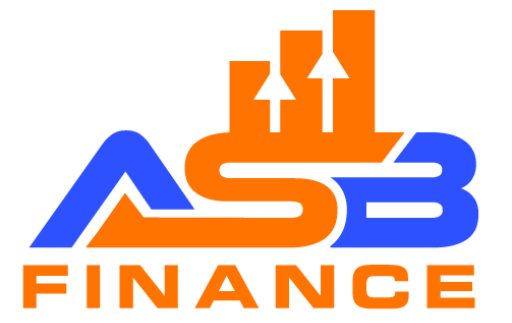
In the world of stock market trading, successful investors often rely on time-tested strategies to make informed decisions. One of the most powerful tools at their disposal is chart patterns. These visual representations of price movements offer traders a roadmap to anticipate market trends, identify potential opportunities, and mitigate risks. Whether you are a beginner or a seasoned trader, understanding the importance of chart patterns can significantly elevate your trading game.
What Are Chart Patterns?
Chart patterns are graphical formations that emerge on price charts over time. They represent the psychological behavior of market participants and serve as indicators of potential future price movements. These patterns are classified into three main categories:
- Continuation Patterns: Indicate that the current trend is likely to continue. Examples include flags, pennants, and rectangles.
- Reversal Patterns: Signal a potential change in the direction of the current trend. Examples include head and shoulders, double tops, and double bottoms.
- Bilateral Patterns: Suggest that the price could move in either direction, such as symmetrical triangles.
Why Are Chart Patterns Important?
1. Prediction of Market Trends
Chart patterns help traders predict market trends by providing visual cues about the behavior of buyers and sellers. For instance, a breakout from a symmetrical triangle could indicate the beginning of a strong upward or downward trend.
2. Identification of Entry and Exit Points
One of the key advantages of chart patterns is their ability to identify optimal entry and exit points. Traders can use patterns like the cup and handle to time their entry during a bullish trend or employ a descending triangle to set their exit points in a bearish market.
3. Risk Management
By recognizing chart patterns, traders can establish stop-loss orders and limit potential losses. For example, if a stock forms a head and shoulders pattern, a trader can set a stop-loss below the neckline to minimize risk.
4. Universal Application
Chart patterns are not restricted to a specific asset class. Whether you are trading stocks, forex, commodities, or cryptocurrencies, these patterns are universally applicable, making them a versatile tool for traders across markets.
Popular Chart Patterns Every Trader Should Know
1. Head and Shoulders
This is a classic reversal pattern that indicates a shift from a bullish trend to a bearish trend. It consists of three peaks, with the middle peak (the head) being the highest. The neckline serves as a critical support level, and a breakdown below it signals a potential decline.
2. Double Tops and Double Bottoms
These are reversal patterns that indicate the end of an uptrend (double top) or downtrend (double bottom). A breakout or breakdown from these patterns often leads to significant price movements.
3. Triangles
Triangles can be symmetrical, ascending, or descending. These patterns form when price movements narrow over time, creating a triangle-like structure. A breakout from the triangle indicates a potential price surge in the direction of the breakout.
4. Cup and Handle
This bullish continuation pattern resembles a teacup. The “cup” represents a rounded bottom, while the “handle” is a short consolidation before the breakout. It is often seen as a signal for further upward movement.
5. Flags and Pennants
These are continuation patterns that form after a strong price movement. Flags are rectangular, while pennants are triangular. Both patterns suggest that the existing trend will likely resume after a brief consolidation.
How to Use Chart Patterns Effectively
1. Combine with Technical Indicators
While chart patterns are powerful, they are even more effective when used in conjunction with technical indicators such as moving averages, RSI (Relative Strength Index), and MACD (Moving Average Convergence Divergence).
2. Understand Market Context
Chart patterns should not be analyzed in isolation. Always consider the broader market context, including fundamental factors, news events, and overall market sentiment.
3. Practice Patience
Identifying and trading chart patterns requires patience and discipline. Wait for confirmation signals, such as a breakout accompanied by high volume, before making your move.
4. Keep a Trading Journal
Documenting your trades and the patterns you rely on can help you identify what works and what doesn’t. Over time, this practice will refine your trading strategy.
Common Mistakes to Avoid
- Ignoring Volume: Volume is a crucial factor in confirming the validity of a chart pattern. Always ensure that breakouts or breakdowns are accompanied by significant changes in volume.
- Overlooking False Breakouts: Not all breakouts lead to sustained trends. Use additional indicators to validate the breakout.
- Misinterpreting Patterns: Novice traders often confuse one pattern with another. Spend time learning and practicing to minimize errors.
- Overtrading: Relying solely on chart patterns without considering other factors can lead to overtrading, which increases risk.
Why Partner with AngelOne for Chart Pattern Analysis?
As a partner of AngelOne Limited, asbfinance.in empowers traders with advanced tools and resources to analyze chart patterns effectively. AngelOne’s intuitive trading platforms, combined with real-time data and expert insights, make it easier to spot and act on trading opportunities. Whether you’re a beginner or a seasoned trader, leveraging these tools can help you stay ahead in the competitive world of stock market trading.
Conclusion
Chart patterns are an indispensable component of technical analysis, providing traders with actionable insights into market behavior. By understanding and applying these patterns, you can enhance your ability to predict trends, manage risks, and execute profitable trades. At asbfinance.in, we are committed to equipping you with the knowledge and tools you need to excel in stock market trading. Start exploring the power of chart patterns today and take your trading journey to the next level!
